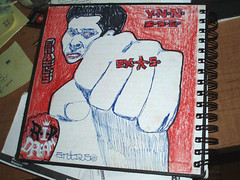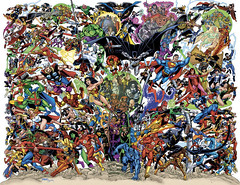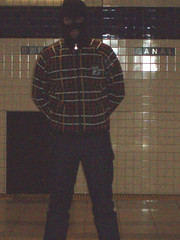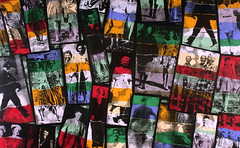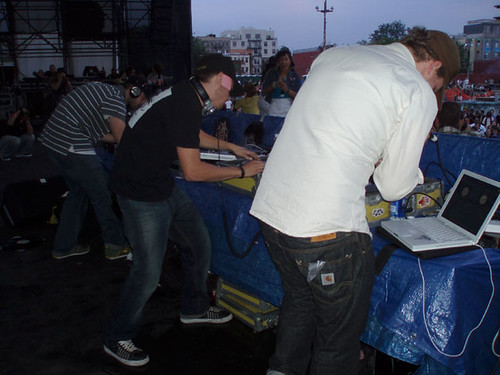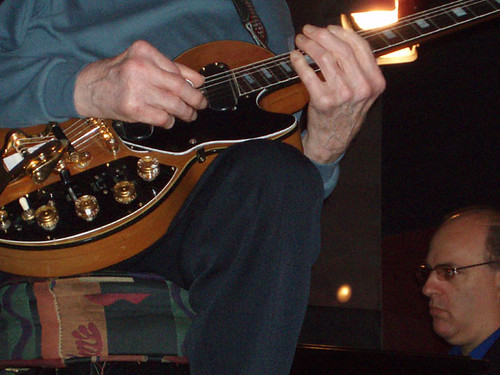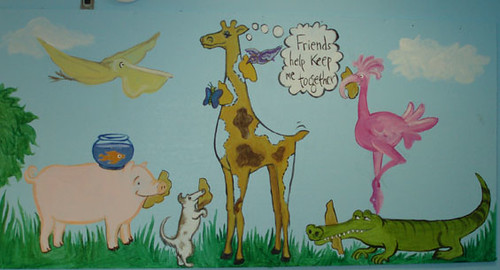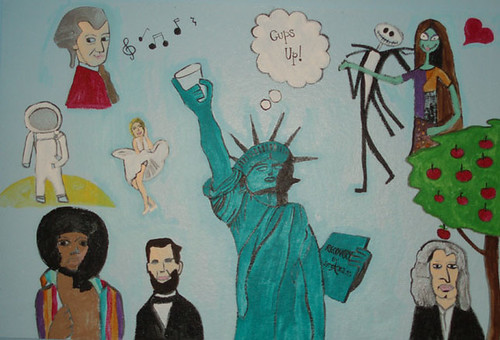Sunday, December 03, 2006
Docu-Album 5: The Global Picture
Saturday, December 02, 2006
Just a sketch...
(text added 11/03/07)
Caught in a pimpin pose...
Monday, November 27, 2006
What! I'm Listening to: (part 4)
The Most Beautiful Girls in the World...
Saturday, November 25, 2006
8th most dangerous city receives another blow...
But it won't be the same without the A's.
"We lose a team that has so much history with the city," City Councilman Larry Reid said. "The success of the Oakland A's lies within the city. There is a group of die-hard Oakland A's fans that have stuck with the team through thick and thin."
>>The Fremont A's?? There's something wrong with that...I'm gonna spill a little on the curb for the old Mustache Boys and Billy Ball...Renowned jazz singer Anita O'Day dies
Thursday, November 23, 2006
Unshackeled Shit in da AM...Part 12
Monday, November 20, 2006
Paint Flu-mes...
Bill Christensen
from
technovelgy.com
Sat. Nov. 18 2006
A remarkable new anti-viral polymer can be applied like paint and could help reduce the spread of germs in public areas and hospitals. The "biocidal paint" was developed by MIT's Alexander Klibanov.
In a graphic demonstration (see photo), a regular commercial glass slide and another one coated with alkylated PEI "paint" were sprayed with aqueous suspensions of Staphylococcus aureus cells, and then incubated. Some 200 bacterial colonies are seen on the unprotected slide—and only 4 on the protected one...
How does it work? In the case of bacteria, the polymer seems to gouge holes in a microbe's cell wall and then spill out its contents. The polymer molecules stay rigid because they are all positively charged and repel each other; they are like strands of hair standing on end from a static charge. The spikes have sufficiently few charges, however, that they can breach bacterial walls, which repel strongly charged molecules. The polymer probably neutralizes flu because the virus has an envelope around it suitable for spearing, Klibanov says.
From Scientific American via MedGadget.
Saturday, November 18, 2006
Banksy's Holidy in Israel...

from barganews.com...Artist Banksy has decorated Israel's controversial West Bank barrier with satirical images of life on the other side. He condemned the wall but described it as "the ultimate activity holiday destination for graffiti writers".
Slimy Robot

from VestalDesign.com...A lab at MIT under Annette Hosoi has developed a small climbing robot modeled after a snail. Using a sticky gel, it can climb on vertical surfaces or even upside down.
The team tested out their snail on a tilting platform, covered with a 1.5-millimetre-thick layer of slime made from Laponite, a type of clay that forms a clear, sticky gel when mixed with water.
The robot is being used to test mathematical models of snail locomotion.
Mickey Mouse is 78 years old today...

Michael "Mickey" Mouse is a comic animal cartoon character who has become a symbol for The Walt Disney Company. He was created in 1928 and voiced by Walt Disney. The Walt Disney Company celebrates his birth as November 18, 1928 upon the release of Steamboat Willie. The mouse has evolved from being simply a character in animated cartoons and comic strips to become one of the most recognizable symbols in the world.
Walt Disney voiced Mickey Mouse from 1928 until 1946, when sound effects man James G. MacDonald took over the role. Mickey is currently voiced by Wayne Allwine.
Disney said he got his inspiration from a rodent at his failed Laugh-O-Gram Studio in Kansas City, Missouri which he had nicknamed Mortimer Mouse.
The origins of Mickey Mouse actually lie in the early 1920s. Paul Terry developed the first mouse cartoon character in what would later be called the "Mickey Mouse" style in the early 1920s. These mice appeared in his Aesop's Fables cartoon series. Walt Disney admitted that his earliest ambitions was to produce cartoons of comparable quality to Paul Terry. Disney told interviewers later that he was inspired to create Mickey by a tame mouse at his desk at Laugh-O-Gram Studio in Kansas City, Missouri:
In 1928 Walt Disney had Ub Iwerks make some drawing for the new cartoon character. During a train trip to New York, Walt Disney showed the drawings to his wife Lillian Marie Bounds and said he was going to call it "Mortimer Mouse." She replied that the name sounded "too dark" and suggested Mickey instead.
Yet a further story, much publicized, has it that a six year old Mickey Rooney was filming the Mickey Maguire series when he was introduced to Walt Disney during a lunch break. Disney showed the Morty Mouse cartoon drawings to Rooney who introduced himself as Mickey Maguire. Rooney states that Disney might first have had the idea to name the character 'Mickey' at that meeting.>>Even though Mickey is not my favorite animated character, he is a monster...the best-known icon for a monster corporation...I guess I have to appreciate his humble beginnings...not to mention that he was in the first sound cartoon...

from Slick at Dissizit...
Friday, November 17, 2006
Burning New York...

The release party for the book by James T. Murray and Karla L. Murray at Bowery Tatoo was chill...Free beer and altoids...Met some nice people, Poem from FX and NicOne (YNN)...The book is a good compilation of murals, quotes, interviews, 208 full glossy pages, hardcover...Shoutout to Connecticut...
Tuesday, November 14, 2006
snails for what ails...
AP-from Yahoo.com Nov. 14 2006
SALT LAKE CITY - University of Utah researchers have harvested a substance from the venom of a cone snail that shows promise in treating some human pain.The findings were published in Tuesday's edition of the journal "Proceedings of the National Academy of Sciences."
...The Conus regious cone snail is tiny worm-hunting sea creature found in coastal waters between Georgia and Brazil. The snails produce poisonous venom to paralyze prey.
Previous studies of cone snails found compounds from venom effective in treating pain in terminal cancer patients. This new research shows other venom-derived compounds may ease pain associated with nerve damage from diseases like diabetes or traumatic injury.
The discovery is important in part because scientists have found a previously unsuspected molecular target for painkillers. It's that receptor — one not previously thought to be involved with pain — that when bound with the cone snail substance seems to reduce pain by preventing the body from triggering inflammation. That's the opposite effect of most drugs, which prompt the body to release natural substances in response to injury or pain.
The compound worked when tested on laboratory animals at Wake Forest University School of Medicine in Winston-Salem, N.C., McIntosh said.
Now that researchers have identified the mechanism they hope pharmaceutical companies will be able to use it to make a synthetic form of the medication in a pill form, McIntosh said. But it could be 10 years before any drugs reach the market, he said.
Saturday, November 11, 2006
On a Friday night in Chinatown...
on street corners with Kabuki theater, beatnik poetry,
bad bad rapping...bakery goods and milk tea...All in
all, not a bad night..These are shots of Mister Never across the platform...
Tuesday, November 07, 2006
Education is Politics...
by David Herszenhorn
NYTimes.com Published Nov. 7, 2006
The Bloomberg administration and the New York City teachers’ union reached a tentative deal last night on a contract that would increase pay by 7.1 percent over two years and essentially forge a peace agreement between Mayor Michael R. Bloomberg and the union from now through the end of his term in 2009.
The surprisingly early agreement will, for the first time, lift base pay for the most senior teachers above $100,000 a year, an important and symbolic threshold that brings salaries for city educators closer to those in the suburbs...“This proposed contract was not negotiated retroactively,” Mr. Bloomberg declared at a news conference last night at City Hall. “Rather, it is an agreement we’ve come to nearly a year before the current contract expires, the earliest date before expiration that we have ever reached a new collective bargaining agreement.”The mayor spoke just hours before New Yorkers headed to the polls with Eliot Spitzer leading widely in the race for governor. Mr. Spitzer has promised to comply with a court order mandating at least $4.7 billion more a year in aid for the city’s schools, but insists that the city contribute...
>>The mandated money is a 13-year battle between the State of NY and the city NY regarding the lack of funding compared to the rest of NY...
Monday, November 06, 2006
Jesus of the Week...And Germany's Neck.CNS

I was listing some apartments in the East Bay for my Mom and I came across this...Jesus of the Week...
Germany's Neck...
Saturday, November 04, 2006
Butterfly fossils...
Friday, November 03, 2006
Oldest Bee Fossil Creates new Buzz

by Sara Gourdarzi
LiveScience.com
posted October 25, 2006
The discovery of the oldest bee fossil supports the theory that bees evolved from wasps, scientists reported today.
The 100 million-year-old fossil was found in a mine in the Hukawng Valley of Myanmar (Burma) and preserved in amber. Amber, which begins as tree sap, often traps insects and plant structures before they fossilize.
"This is the oldest known bee we've ever been able to identify, and it shares some of the features of wasps," said lead author George Poinar, a researcher from Oregon State University. "But overall it's more bee than wasp, and gives us a pretty good idea of when these two types of insects were separating on their evolutionary paths."
The quarter-inch fossil shares traits of the carnivorous wasp such as narrow hind legs while exhibiting branched hairs on its leg, a characteristic of the modern bee that allows pollen collection.
Around the same time the bee was trapped, plants that rely on mechanisms other than the wind to spread their seeds, started expanding and diversifying. Prior to that, the world was mostly green with conifer trees that depended on the wind for pollination.
"Flowering plants are very important in the evolution of life," Poinar said. "They can reproduce more quickly, develop more genetic diversity, spread more easily and move into new habitats. But prior to the evolution of bees they didn't have any strong mechanism to spread their pollen, only a few flies and beetles that didn't go very far.
The study is detailed in Oct. 27 issue of the journal Science.
He whispered in my ear, "I'm going to start a company..."
Wednesday, November 01, 2006
Monday, October 30, 2006
Few posts this month, little breaks, Halloween already...
Thursday, October 26, 2006
Sunday, October 08, 2006
The first computer? Greeky geeky...

The First Computer
A mysterious device found in Greek waters was not brought by aliens, but it was used by ancient Greeks to track distant stars.
By Stephen Ornes
DISCOVER Vol. 27 No. 10 | October 2006 | Technology
In 1901, divers recovered a shoebox-size, gear-filled box from a 2,000-year-old shipwreck on the floor of the Mediterranean Sea. Ever since, the enigmatic box—known as the Antikythera Mechanism—has spawned its share of bizarre theories. "Some people thought it came from outer space," scoffs Athens University physicist Yanis Bitsakis. "And since the mechanism has Greek writing on it, the other ridiculous story is that Greeks themselves came from outer space and brought the mechanism with them." More sober minds suggested the box was a clock or a navigational device, but even those interpretations rested on skimpy evidence.
Now an international team of researchers claim they have found the answer. Three-dimensional scans of the machine's innards, taken last year by an eight-ton "microfocus" X-ray machine built around the mystery object, revealed ancient inscriptions and complicated gear trains that gave away the machine's purpose. "It's an all-in-one astronomical device," says Bitsakis, who spends up to 15 hours daily deciphering the inscribed text. "In a single machine, the designer tried to put all the knowledge he had about astronomical phenomena."
The 30-odd bronze gears and 2,000 inscribed Greek characters in the Antikythera Mechanism helped ancient Greek scientists track the cycles of the solar system and calculate the motions of the sun, the moon, and the planets. According to Cardiff University astrophysicist Michael Edmunds, the box technically qualifies as a computer. "To build one of these is not trivial," he says. "It shows how technically advanced the Greeks were."

Friday, October 06, 2006
Sunday, September 24, 2006
Animations research...
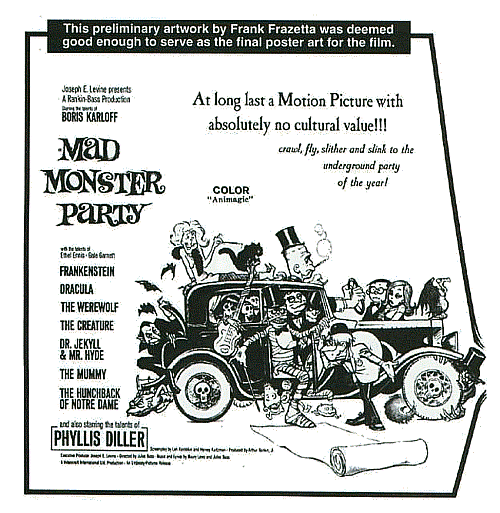



Also, Mark Fiore's political animations are very good...For Germ, I bring up Galaxy High School in the 80's...
And of course Genndy Tartakovsky's Dexter's Laboratory on Cartoon Network...

Also on Cartoon Network for their Adult Swim segments is Robot Chicken...I also like the VH1 Illustrated show...
Don't Mess With Einstein...
New Experiments strike a blow to Time Travel
by Laura Wright
>>It has always been a question that man has pondered, time travel...My universe is intact knowing that Einstein was right about special relativity...It's enough that we have to relearn the planets...
Three years ago, researchers created a light pulse that appeared to defy nature's fundamental speed limit—it traveled faster than the speed of light in a vacuum. If it were possible to transmit information at such speeds, Einstein's theory of relativity would be in tatters, and the principle of causality—the idea that cause must always come before effect—would go out the window. With a faster-than-light telephone, you could place a call back in time and tell your parents not to conceive you, for example. Now physicists (and everyone vexed by time-travel paradoxes) can breathe a sigh of relief. A recent series of experiments by experimental physicist Dan Gauthier of Duke University confirm that the earlier result was a kind of illusion; information cannot outrun light's fastest pace. The ruckus began in 2000, when physicist Lijun Wang of the NEC Research Institute in Princeton, New Jersey, and his colleagues beamed a pulse of light through a chamber filled with a cloud of cesium atoms and recorded how long it took for the light to emerge from the other side. In apparent disregard for Einstein's physics, the light pulse exited the chamber before the researchers saw it enter. When the peak of the light pulse entered the chamber, the different waves that made up the pulse split apart, each changing in both wavelength and frequency. As the waves exited the chamber, they recombined to form a peak identical to the one that Wang saw enter the chamber a split second later. The waves behaved as though they'd been stretched and hurled forward in time, with the gas in the chamber acting like a slingshot. But the waves had not really broken any rules—only their shape had changed. And yet, because at least part of the waves had traveled faster than the speed of light, Wang claimed that light's speed limit wasn't immutable after all.
His claims would have come as no surprise to Einstein, were he alive today. In the early part of the 20th century, Einstein worried that experiments might someday be developed to challenge the limit of the speed of light. Concerned about the paradoxes that might arise if things could travel so fast that cause and effect might be reversed, he and his cronies came up with the revised theory of special relativity, which states that no mass, pulse of information, or energy can travel faster than the speed of light. But nobody was really sure how this revised theory would affect the speed limit of a simple wave.
Wang had not claimed to have transmitted information faster than light. In fact, physicists had never clocked the maximum speed of an information-carrying beam of light. Nevertheless, many popular news stories described Wang's work as a challenge to Einstein, and many physicists also had a hard time understanding how a beam of light could escape a test chamber before it entered. "We were intrigued by the results and wondered if we could figure out how to measure the speed of information," Gauthier says.
Gauthier and his student Michael Stenner, along with Mark Neifeld of the University of Arizona, devised an experiment much like Wang's, using light pulses moving through a gas of potassium atoms. As expected, the light pulses appeared to move at faster-than-light velocities. Gauthier's real goal was clocking how fast information could travel to a given location, so he and his colleagues imprinted a simple signal on the pulse—two discontinuities that could represent the one and zero of a binary code—and watched to see when the signals came out of the chamber. Whereas Wang observed the wave peak, Gauthier focused on the wave front, the first photon of the imprinted signal on the pulse, reasoning that if the wave front did not travel faster than the speed of light, then no information within the pulse could, either. "You can have the peak of the pulse traveling faster, so it catches up," Gauthier explains. "But you can't make the pulse go faster than that very first moment."
The experiments, published in the October 16 issue of Nature, revealed that the first photon of the changed pulse inched up to the maximum speed of light but did not surpass it, even though subsequent peaks within the pulse gained on the wave front at faster-than-light speeds. The elaborate series of tests all boiled down to a simple conclusion: As usual, Einstein had been right all along.
Newest Audio Technology...

from NYTimes.com
by Larry Magid
Broadcasters, musicians and serious audiophiles have long been consumers of high-end portable audio gear, but podcasting has created an expanded market for this equipment. While it is possible to create a podcast with nothing more than a computer, a microphone and some audio-editing software, there are times when it’s nice to be able to conduct interviews, gather sound or record programs when away from a PC. For that you’ll need some type of portable recording equipment.
Until a few years ago that would probably have been a portable analog cassette tape recorder. More recently, it might have been a MiniDisc recorder or digital audio tape recorder. But today, the hottest recorders do not use tape or discs but record to the same type of nonvolatile flash memory used in digital cameras.
Flash has no moving parts to make noise while you record, and it is compact. An SD flash card, not much bigger than a postage stamp, can hold as much as four gigabytes or up to 130 hours of compressed monaural audio (some recorders, however, do not work with SD cards that store more than two gigabytes). Compact Flash cards can store up to eight gigabytes.
Also, data on a memory card can be easily transferred to a PC or a Mac with a U.S.B. cable or by removing the card from the device and putting it in a PC card reader. Once on a PC, the file can be edited, e-mailed or posted to a server. Because these audio files start out as digital, there is no need to convert them for use on a computer. That saves time and avoids the loss of quality inherent in “dubbing” from one device to another.
There is one drawback. Although flash memory has come down in price substantially over the last couple of years, it remains more expensive per minute of audio than tape or MiniDiscs. That is usually not a problem if you copy the files to a PC, but it can be if you are away from a computer for an extended period or need to deliver a copy of the file in a physical format. Still, with 256-megabyte SD cards selling for as little as $12, it is not all that expensive to carry around extra cards.
Sound quality depends, in part, on the format you use to record. For maximum quality, the higher-end devices can record uncompressed files in the WAV format, but such files take up as much as 10 megabytes a minute for stereo sound. If you are recording speech or music that you are likely to listen to on a portable player like an iPod, you can save a great deal of space by recording as a compressed MP3 file. MP3 is a “lossy” compression, which means some degradation of quality.
There are basically three types of digital flash recorders on the market. There are digital voice recorders like the Olympus VN-3100PC ($69) that are mostly used for dictation and other voice-recording tasks. Also, some digital music players, like the iRiver T30 ($40 for the 512-megabyte model), have recording abilities, and there are accessories for the iPod like the TuneTalk Stereo for iPod ($69) from Belkin.
While those can be used for podcasts, the sound quality and versatility will not be as good as the higher-end dedicated systems like the Marantz PMD 660 ($499), the Edirol by Roland R-09 ($399) and the M-Audio MicroTrack 24/96 ($350).
>>From the review, I have found the Edirol to be the most compelling...
I'm dead to the finish 'cuz I ate that spinach...
"It's a good thing I had a bag of Marijuana instead of a bag of spinach. I'd be dead by now."
courtesy of Fonzie (Jesus Carrillo)...
Saturday, September 23, 2006
On the Radio...
He plays some of Soundwalk (a 3 disk set, one of baseball, one of hiphop, and the other of graffiti meant to be a walking tour) from the graff one...and also a lot of great heads that I especially enjoyed like an old Detroit house guy named CosmoFlex from the early 90's (wonder where he is now) and BusDriver. I'd also like to give a shoutout to those people who showed great love for Billy and me today, Jason from East New York and that PATH train worker who gave me a break on a Metrocard...
Friday, September 22, 2006
Apprendimos a querete...Chavez speaks his mind...
By Ian James, Associated Press
Wed. Sept 13, 2006
CARACAS, Venezuela - One is a Cold War icon who has defied the United States for nearly a half-century. The other is a charismatic ex-military man who could be Washington's biggest Latin American nemesis for years to come...Chavez and his mentor Castro have markedly different styles, but their friendship ensures Cuba critical economic support with a bonanza of Venezuelan oil and credit.
Some who know the 52-year-old Venezuelan predict he will continue to promote Castro's beliefs, challenging U.S. hopes that the Cuban leader's illness will spur democratic change in the communist country...astro and Chavez are united by what they call a crusade against U.S. dominance of Latin America and unbridled capitalism that is driving the world to ruin. A personal connection feeds their ideological closeness.
At Castro's bedside in Cuba recently, Chavez lovingly grasped the hand of the man he says he sees as a father. "He's like the father of all the revolutionaries of our America. He's the lighthouse that lights the paths," Chavez said in one of his marathon speeches that, like Castro's, often run for hours. Castro has designated his younger brother Raul as his eventual successor, but in many ways Chavez has already assumed Castro's role as Latin America's biggest challenge to the U.S. government.
On the economic front, Cuba's trade with Venezuela is booming. Venezuela has helped Cuba defy a U.S. trade embargo, partly supplanting Soviet subsidies that dried up in the early 1990s.
Venezuela predicts trade with Cuba will reach $1.8 billion this year, including shipments of some 98,000 barrels of oil a day sold under preferential terms including deferred payment. Meanwhile, thousands of Cuban doctors are treating poor Venezuelans for free.
"Chavez is a major factor in what's going to happen in Cuba from now on," said Larry Birns, of the Washington-based Council on Hemispheric Affairs. "He essentially has rendered Castro and Castroism immune to any kind of U.S. action unless the U.S. is prepared to threaten its oil supply and begin a diplomatic conflagration in the Caribbean."
Chavez says Venezuelan troops would help defend Cuba against any U.S. invasion.
He has followed Castro's health closely since Cuba announced July 31 that Fidel was temporarily ceding power to his brother after the surgery.
And Chavez increasingly adopts ideas and phrases coined by Castro, including his common exclamation "Fatherland or death!" However, Chavez, unlike the more agnostic Castro, often expounds on links between Jesus Christ and socialism.
Other differences are more obvious.
Venezuela's brand of socialism, which Chavez calls the Bolivarian Revolution, remains a far cry from the communism Castro installed after the revolution toppled dictator Fulgencio Batista in 1959.
While Cuba maintains its single-party political system, Chavez — first elected in 1998 — is running for re-election in a multiparty system.
And while Chavez opponents accuse him of being an autocrat, much of Venezuela's news media remain virulently anti-Chavez. Private businesses continue to drive the Venezuelan economy, despite an increasing state role.
Chavez says the "21st century socialism" he's building will not fit a Cuban blueprint.
He also has praised Cuba as a "revolutionary democracy" with direct citizen participation at the grass-roots level, and he says Castro assures him Cuba's socialist system will live on.
On a Sept. 1 visit to Cuba, Chavez invoked Castro's traditional call to arms as a TV camera rolled: "Hasta la victoria siempre! Venceremos!" — "Toward victory always! We will prevail!"
Castro, visibly moved, repeated the words with gusto...
Chavez takes on Bush during UN trip
NEW YORK - Venezuelan President Hugo Chavez came to New York this week without a prepared speech but with a firm conviction he would address the United Nations without reservations or omissions.
The word he chose to describe President Bush — "the devil" — stirred controversy and some sharp reactions, but Chavez said Thursday that he stood by that term. "Sometimes the devil takes the form of people," Chavez told hundreds of supporters in a church in Harlem. He called the war in Iraq and said Bush is a "sick man."
It was classic Chavez: frank, uncensored and irreverent. Some observers, such as the Rev. Jesse Jackson, suggested both Chavez and the Bush administration both ought to calm their rhetoric and avoid name-calling. But Chavez accused the U.S. of keeping his doctors and his security chief from coming to New York by not granting them visas. "They're attempts to persuade me not to come, because some people would like for me not to come, but I come. I come to say what I think must be said," Chavez said. The Venezuelan has said he did not prepare a script for his speech to the U.N. General Assembly on Wednesday, but rather went in with ideas and spoke spontaneously, as is his custom.
Chavez described himself Thursday as a friend of the American people, and announced Venezuela would boost sales of discounted heating oil to poor Americans. But, he insisted, "we're enemies of imperialism" — his shorthand for the Bush administration.
>>I think President Chavez was fully in his right to say whatever he wanted to about the United States and the President especially since he was on a UN tour and had been denied of visas for his staff...He joins the ranks of George Lucas who released the Star wars trilogy in time with Bush's presidency on purpose...Harlem embraced Chavez and he in turn gave heating oil to their neighborhood...What's new with people thinking badly of Bush? I think it is important for leaders of countries to give heartfelt and honest critiques of one another in case they think that someone is not doing a good job...After all, who else could do that and cause such a controversy that hopefully will promote change? Otherwise, they would just bare their teeth and grin through being a "politician"...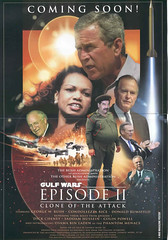
Saturday, September 16, 2006
Thursday, September 14, 2006
The aftermath of 9/11 and 9/12...
Added 5/12/08...Spitzer has proven that his voracious sexual appetite for high-paid prostitutes will get him out of office quick and will also humiliate him, especially in front of all his enemies made as a lawyer, in the process. It is too bad I was so taken in by his seemingly honest campaign slogans. Now that Hilary is in the running for President, and putting up quite a stubborn dragging of the feet, I can only say that she really isn't thinking of what's best for the Dems, she's thinking of herself...Not the kind of candidate I'd like to see, not that she was doing such a good job for New York anyway...
BitTorrent markets Manga and Bollywood...
Dan Nystedt, IDG News Service-MacCentral
The file transfer service BitTorrent plans to open an online movie store to sell foreign films and other hard to find video, including content from China, Japan and India.
The service will not compete with other movie download sites such as the Unbox store launched by Amazon.com last week, nor Apple’s iTunes, both of which offer mainstream shows. Instead, BitTorrent plans to market content users want but have a hard time finding, such as Bollywood movies and shows based on Japanese manga comics...The service will launch in the U.S. by the end of this year, and could help open up the country to foreign film and TV shows. Outside of larger cities in the U.S., foreign content is hard to find, requiring many people to download such content from the Internet...
Happy Birthday Hard Drive...
Rex Farrance, PCWorld
Over the past five decades, hard drives have come a long way. Travel through time with us as we chronicle 50 milestones in hard-drive development--from product firsts to new technologies, and everything in between.
1956: IBM ships the first hard drive, the RAMAC 305, which holds 5MB of data at $10,000 a megabyte. It is as big as two refrigerators and uses 50 24-inch platters. (For the full story and interviews with key players, read "The Hard Drive Turns 50.")
1961: IBM invents heads for disk drives that "fly" on a cushion of air or on "air bearings."
1963: IBM comes up with the first removable hard drive, the 1311, which has six 14-inch platters and holds 2.6MB.
1966: IBM introduces the first drive using a wound-coil ferrite recording head.
1970: General Digital Corporation (renamed Western Digital in 1971) is founded in California.
1973: IBM announces the 3340, the first modern "Winchester" hard drive, which has a sealed assembly, lubricated spindles, and low-mass heads.
1978: First RAID (Redundant Arrays of Independent Disks) technology patent is filed. (Read "How to Buy a Hard Drive: Key Features" for a description of this technology.)
1979: A group headed by Al Shugart founds disk-drive manufacturer Seagate Technology. 1979: IBM's 3370 uses seven 14-inch platters to store 571MB, the first drive to use thin-film heads.
1979: IBM's 62 PC, "Piccolo," uses six 8-inch platters to store 64MB.
1979: Seagate introduces the ST-506 drive and interface, which is then used in all early microcomputer implementations.
1980: IBM introduces the first gigabyte hard drive. It is the size of a refrigerator, weighs about 550 pounds, and costs $40,000.
1980: Seagate releases the first 5.25-inch hard disk.
1981: Shugart Associates joins NCR to develop an intelligent disk drive interface called the Shugart Associates Systems Interface (SASI), a predecessor to SCSI (Small Computer System Interface).
1982: Western Digital announces the first single-chip Winchester hard drive controller (WD1010).
1983: Rodime releases the first 3.5-inch hard drive; the RO352 includes two platters and stores 10MB.
1984: Western Digital makes the first Winchester hard drive controller card for the IBM PC/AT--and sets an industry standard.
1985: Control Data, Compaq Computer, and Western Digital collaborate to develop the 40-pin IDE interface. IDE stands for Intelligent Drive Electronics, more commonly known as Integrated Drive Electronics.
1985: Imprimis integrates the first hard drive controller into a drive.
1985: Quantum introduces the Plus Hardcard, which allows the addition of a hard drive without an available bay or a separate controller card.
1985: Western Digital produces the first ESDI (Enhanced Small Device Interface) controller board, which allows larger capacity and faster hard drives to be used in PCs.
1986: The official SCSI spec is released; Apple Computer's Mac Plus is one of the first computers to use it.
1988: Prairie Tek releases the 220, the first 2.5-inch hard drive designed for the burgeoning notebook computer market; it uses two platters to store 20MB.
1988: Connor introduces the first 1-inch-high 3.5-inch hard drive, which is still the common form factor. Before this, hard drives were either full height or half-height.
1988: Western Digital buys the disk-drive assets of Tandon Corporation with an eye to manufacturing IDE drives.
1990: Western Digital introduces its first 3.5-inch Caviar IDE hard drive.
1991: IBM introduces the 0663 Corsair, the first disk drive with thin film magnetoresistive (MR) heads. It has eight 3.5-inch platters and stores 1GB. (The MR head was first introduced on an IBM tape drive in 1984.)
1991: Integral Peripherals' 1820 Mustang uses one 1.8-inch platter to store 21MB.
1992: Seagate comes out with the first shock-sensing 2.5-inch hard drive.
1992: Seagate is first to market with a 7200-revolutions-per-minute hard drive, the 2.1GB Barracuda.
1992: Hewlett-Packard's C3013A Kitty Hawk drive uses two 1.3-inch platters to store 2.1GB.
1994: Western Digital develops Enhanced IDE, an improved hard drive interface that breaks the 528MB-throughput barrier. EIDE also allows for attachment of optical and tape drives.
1996: IBM stores 1 billion bits per square inch on a platter.
1996: Seagate introduces its Cheetah family, the first 10,000-rpm hard drives.
1997: IBM introduces the first drive using giant magneto resistive (GMR) heads, the 16.8GB Deskstar 16GP Titan, which stores 16.8GB on five 3.5-inch platters.
1998: IBM announces its Microdrive, the smallest hard drive to date. It fits 340MB on a single 1-inch platter.
2000: Maxtor buys competitor Quantum's hard drive business. At the time, Quantum is the number-two drive maker, behind Seagate; this acquisition makes Maxtor the world's largest hard drive manufacturer.
2000: Seagate produces the first 15,000-rpm hard drive, the Cheetah X15.
2002: Seagate scores another first with the Barracuda ATA V Serial ATA hard drive.
2002: A demonstration by Seagate yields a perpendicular magnetic recording areal density of 100 gigabits per square inch.
2002: Among its many 2002 technology accomplishments, Seagate successfully demos Heat-Assisted Magnetic Recording. HAMR records magnetically using laser-thermal assistance and ultimately aims to increase areal density by more than 100 times over 2002 levels.
2003: IBM sells its Data Storage Division to Hitachi, thus ending its involvement in developing and marketing disk drive technology.
2003: Western Digital introduces the first 10,000-rpm SATA hard drive, the 37GB Raptor, which is designed for the enterprise, but which gamers quickly learn is a hot desktop performer in dual-drive RAID setups.
2004: The first 0.85-inch hard drive, Toshiba's MK2001MTN, debuts. It stores 2GB on a single platter.
2005: Toshiba introduces its MK4007 GAL, which stores 40GB on one 1.8-inch platter, fielding the first hard drive using perpendicular magnetic recording.
2006: Seagate completes the acquisition of Maxtor, further narrowing the field of hard drive manufacturers.
2006: Seagate's Momentus 5400.3 notebook hard drive is the first 2.5-inch model to use perpendicular magnetic recording, which boosts its capacity up to 160GB.
2006: Seagate releases the Barracuda 7200.10, at 750GB the largest hard drive to date.
2006: Western Digital launches its 10,000-rpm Raptor X SATA hard drive, boosting its capacity to 150GB and placing a flashy transparent window that allows specially designed computer cases to showcase its inner workings.
2006: Cornice and Seagate each announce a 1-inch hard drive that holds 12GB. The drives are slated to ship in the third quarter of 2006.
>>An example of military technology made for public consumption that has been beneficial for progress...The question really is has humanity made that much progress with our ever-increasing technology?
Monday, September 04, 2006
My newest TV Obsession...
McCarren Park Pool Party
Tuesday, August 29, 2006
Mister Never gets press
Drawing on New Orleans...
On this anniversary of the flood in the Gulf Coast, I thought you might like to see some work that was published in today's New York Times Op-Ed section including the work of MassArt alumnus, Jeff Marshall (MFA '00). To mark the anniversary of Hurricane Katrina, the Op-Ed page asked artists who either live or have spent considerable time in New Orleans to draw and write about a place of particular importance to them in the city.
Click here to view work by DAVID ROBERTS, KAROLINE SCHLEH, JACQUELINE BISHOP, JEFFREY MARSHALL, PAUL ROGERS, MYRTLE VONDAMITZ and KYLE BRAVO. Click here to view more of Jeff Marshall's work and the background to his New Orleans drawing project.
Les is more...
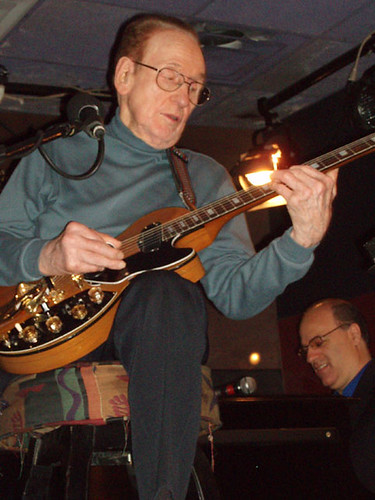
Sunday, August 27, 2006
What! I'm Listening to (part 4):
"Acoustical Liberation of books in the public domain"
from NYTimes.com (Public Domain Books, Ready for your Ipod)> by Craig Silverman...LibriVox’s founder, Hugh McGuire, 32, a software developer and writer in Montreal, said there were another 100 works in development, all of which would be recorded, edited and uploaded by volunteers.“The principles of the project are to be totally noncommercial, totally ad free, totally volunteer and totally public domain,” he said.
Noble, not Nobel...
from NYtimes.com
Prestigious Award, ‘Nobel’ of Mathematics, Fails to Lure Reclusive Russian Problem Solver
by Kenneth Chang
Grigory Perelman, a reclusive Russian mathematician who solved a key piece in a century-old puzzle known as the Poincaré conjecture, was one of four mathematicians awarded the Fields Medal yesterday.
But as with previous honors, Dr. Perelman refused to accept this one, and he did not attend the ceremonies at the International Congress of Mathematicians in Madrid.
“I regret that Dr. Perelman has declined to accept the medal,” Sir John M. Ball, president of the International Mathematical Union, said during the opening ceremonies.
The Fields Medal, often described as mathematics’ equivalent to the Nobel Prize, is given every four years. The other Fields medalists this year are Andrei Okounkov, a professor of mathematics at Princeton; Terence Tao, a professor of mathematics at the University of California, Los Angeles; and Wendelin Werner, a professor of mathematics at the University of Paris-South in Orsay, France.
Dr. Perelman, 40, is known not only for his work on the Poincaré conjecture, among the most heralded unsolved math problems, but also because he has declined previous mathematical prizes and has spurned offers from Princeton, Stanford and other universities. He has shown no interest in pursuing the $1 million that the Clay Mathematics Institute in Cambridge, Mass., is offering for the first published proof of the conjecture.
In June, Sir John went to St. Petersburg, Russia, where Dr. Perelman lives, and spent two days trying to persuade him to travel to Madrid to accept the Fields. “He was very polite and cordial and open and direct,” Sir John said in an interview.
And Dr. Perelman was resolute in saying no. “The reasons center around his feeling of isolation from the mathematical community,” Sir John said, “and in consequence his not wanting to be a figurehead for it or wanting to represent it.” He added: “I don’t think he meant it as an insult. He’s a very polite person. There was never a cross word.”
Despite Dr. Perelman’s refusal, he is still officially a Fields medalist. “He has a say whether he accepts it, but we have awarded it,” Sir John said.
Beginning in 2002, Dr. Perelman, then at the Steklov Institute of Mathematics of the Russian Academy of Sciences in St. Petersburg, published a series of papers on the Internet and gave lectures at several American universities describing how he had overcome a roadblock in the proof of the Poincaré conjecture.
The conjecture made by Henri Poincaré in 1904 essentially says that any shape that does not have any holes and fits within a finite space can be stretched and deformed into a sphere. That is certainly true looking at two-dimensional surfaces in the everyday three-dimensional world, but the conjecture says the same is true for three-dimensional surfaces embedded in four or more dimensions.
Dr. Perelman solved a problem other mathematicians had encountered when trying to prove the conjecture using a technique called Ricci flow that smoothes out bumps in a surface and transforms the surfaces into simpler forms.
Dr. Okounkov, born in 1969 in Moscow, was recognized for work linking different fields of mathematics that had seemed unrelated. “This is the striking feature of Okounkov’s work, finding unexpected links,” said Enrico Arbarello, a geometry professor at the University of Rome.
Dr. Okounkov’s work has found use in describing the changing surfaces of melting crystals. The boundary between melted and nonmelted is created randomly, but the random process inevitably produces a border in the shape of a heart.
Dr. Tao, a native of Australia and, at age 31, one of the youngest to win a Fields Medal, has worked in several fields, producing significant advances in the understanding of prime numbers, techniques that might lead to simplifying the equations of Einstein’s theory of general relativity.
Dr. Werner, born in Germany in 1968, has also worked at the intersection of mathematics and physics, describing phenomena like percolation and shapes produced by minute particles jittering randomly in a process known as Brownian motion.
The medal, first awarded in 1936, was conceived by John Charles Fields, a Canadian mathematician, “in recognition of work already done and as an encouragement for further achievements on the part of the recipient.” That stipulation has been interpreted to mean that the award should usually be limited to mathematicians 40 or younger.
Battra...
Update: I have since given up duties as foster parent to Mao...I can only handle one cat at a time...

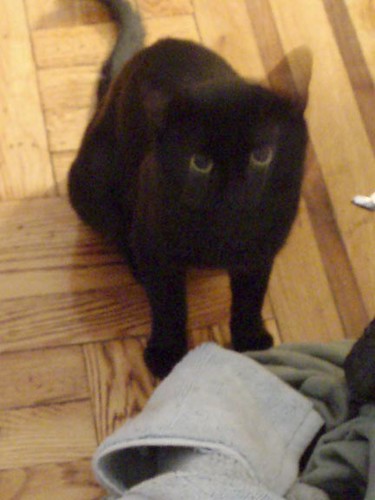
Wednesday, August 23, 2006
I have a reliable Apple product...
Tuesday, August 22, 2006
I am a foster parent...
got a brindle brown Domestic Short Hair named Roger...I renamed him "Closetman Mao" because the first thing he did was go to my closet and stay there
for almost the whole first day...It is the second day that he has been with me and he has since spent most
of the time out of the closet...He is a sweetheart, really affectionate...
Update: There is a bit of controversy surrounding BAFN...They seem to have a very high turnover rate and there are claims that the founder is only in it for the money which does not go back to foster care...Any rescue organization is going to be costly...I am undecided on whether or not BAFN is shady...I don't know them well enough, but I have been warned through comments on Craig's List...
Monday, August 21, 2006
Don't know much about history...
Diversity brings breadth to U.S. History
By ERIN TEXEIRA, AP National Writer
Sun. Aug. 20, 2006 11:01 PM
American students often get the impression from history classes that the British got here first, settling Jamestown, Va., in 1607. They hear about how white Northerners freed the black slaves, how Asians came in the mid-1800s to build Western railroads. The lessons have left out a lot. Forty-two years before Jamestown, Spaniards and American Indians lived in St. Augustine, Fla. At least several thousand Latinos and nearly 200,000 black soldiers fought in the Civil War. And Asian-Americans had been living in California and Louisiana since the 1700s.
Now, more of these and other lesser-known facts about American minorities are getting more attention. The main reason is the nation's growing diversity.
More than one in four Americans is not white, and many minority groups are gaining strength — in numbers, political clout and resources — to bring their often-overlooked histories to light.
Minority communities "are yelling for inclusion in the national consciousness," said Gary Okihiro, a historian at Columbia University. "One needs to understand what's true about the past to be able to make sound judgments about our present."
There are hundreds of efforts — big and small — under way to tell the untold stories.
Although Hispanics are the nation's largest minority group — 14.5 percent of the population according to Census Bureau figures released last week — there is no national museum dedicated to their history.
Democratic Rep. Xavier Becerra (news, bio, voting record) of California is pushing a bill to study building one on the National Mall in Washington. "When you walk the Mall in the capital of the United States, there is no better place to try to understand what Americans are and where we have been," Becerra said. "But it's still an incomplete picture."
The Mall has dozens of sites highlighting American culture and history, including the National Museum of the American Indian that opened in 2004, 20 years after it was authorized. Organizers in June settled on the future site of the National Museum of African American History and Culture, but its opening date is still years away. A Latino museum would be even further off.
Other federal agencies are shifting their work to incorporate more minorities' stories. Six years ago, National Park Service historians met to reevaluate how park sites tell the story of the Civil War, said Donald W. Murphy, deputy director of the parks. Old battlefield exhibits mainly discussed who fought and how many died. Now they include personal diaries, including those kept by slaves.
Once considered marginal to American history, those stories are "really important because oftentimes the margins really are the holders of American democracy," said Okihiro, an expert in Asian-American history. "They are those who have fought against their own racial profiling and fought for the freedoms that the majority seem to take for granted."
Asian-Americans are the only immigrants in U.S. history to have faced laws explicitly written to bar their entry — laws that were not overturned until immigration reform in the 1960s, said Dmae Roberts, whose eight-hour public radio program on Asian immigration, "Crossing East," airs on hundreds of stations.
"People know very little of this outside of California," she said.
Some tales have gone untold because, in the less-diverse America of the past, minorities didn't make the decisions on textbooks and other means of passing along history. And in many cases, minorities who had faced blatant discrimination wanted to discard evidence of past horrors.
But some who came of age during the civil rights movement are determined to pass the stories on. "It is so important that children of color are not made to feel that they're asking for anything — they're claiming what's rightfully theirs just like any other child," said Cynthia Morris Lowery, executive director of the African American Experience Fund. "I tell my grandchildren 'Grandpa has earned that spot for you.'"
Sometimes, history is recalled through criminal investigations.
Prosecutors in Jackson, Miss., last year exhumed the remains of Emmett Till, a black teenager killed in 1955 for allegedly whistling at a white woman. Medical examiners performed a new autopsy, and investigators are poring over thousands of documents.
Florida's attorney general ended an investigation last week into a 1951 house bombing that killed two civil rights activists. The probe found extensive circumstantial evidence pointing to four Ku Klux Klan members, all of whom are dead, Attorney General Charlie Crist said Wednesday.
Technology advances also have fueled new interest in history.
In Connecticut last month, archaeologists excavated the grave of an 18th century slave named Venture Smith in hopes that DNA evidence could verify tales of amazing physical strength and a childhood in Guinea, West Africa. No DNA traces were found, but the graves of his wife and children also will be examined.
Paul Beaty of Dallas turned to DNA testing when, after a decade of genealogical research, he could not trace his roots earlier than the 1830s due to incomplete slavery records. The tests linked him to the Ewondo tribe in Cameroon, West Africa, and when his son was born last month, he was named Evan Ewondo.
"We make the connections in America and make the connections in Africa and now we understand our lives," he said. "Now we can build bigger relationships. We are truly creating history." The quest to get the stories told is hardly over.
Though there are more than 12 million Asian-Americans, Roberts said it's tough to persuade stations to air her program, which is being broadcast through next May. "There are stations that haven't quite decided — they say 'We don't have any Asians here,'" Roberts said. "I tell them 'This isn't for Asians. This is for everyone else.'"
Sunday, August 20, 2006
Friday, August 18, 2006
Joan's mural at South Beach...
a pleasure to get down with...
South Beach Hospital Mural
Wednesday, August 16, 2006
New-clear...

from discover.com
America plans its first nuclear warhead in two decades
by Alex Stone
Everything has an expiration date—even nuclear warheads. Concerned that the United States' 10,000-strong stockpile of atomic bombs are past their prime, scientists at Lawrence Livermore National Laboratory in California and Los Alamos National Laboratory in New Mexico are vying to design the first new nuclear bomb in the United States since the W88 warhead in the mid-1980s. The bomb, dubbed the Reliable Replacement Warhead, "is the next logical step," announced the Department of Energy, which sponsors the design competition and is expected to select a winning model for development—pending congressional approval—later this year.
As countries like North Korea and Iran acquire or approach nuclear capability, the program may sound long overdue. And even though the half-life of weapons-grade plutonium is 24,000 years, some experts have suggested that alpha particles emitted as the plutonium decays could crack the pits in the bombs that contain it within 15 years. But careful analysis of old warheads by the Energy Department turned up no signs of weakness, raising questions about the need for new nukes.
To avoid violating international antitesting treaties, the stockpile is kept up to date via a $6 billion-a-year recertification program that tests existing weapons for signs of corrosion. "They take out pits from old weapons and find that all these potential problems are not occurring," explains Ivan Oelrich, a physicist at the Federation of American Scientists. "The consensus is that plutonium pits will be stable for at least 90 to 100 years." What's more, a new warhead might undercut efforts to discourage nuclear proliferation abroad. "It's hypocritical for us to call for other nations to stop their nuclear goals when the United States seems to be pushing its own nuclear program," says Robert Nelson, a physicist at the Union of Concerned Scientists. "We should be doing everything we can to discourage other countries from developing nuclear weapons."
